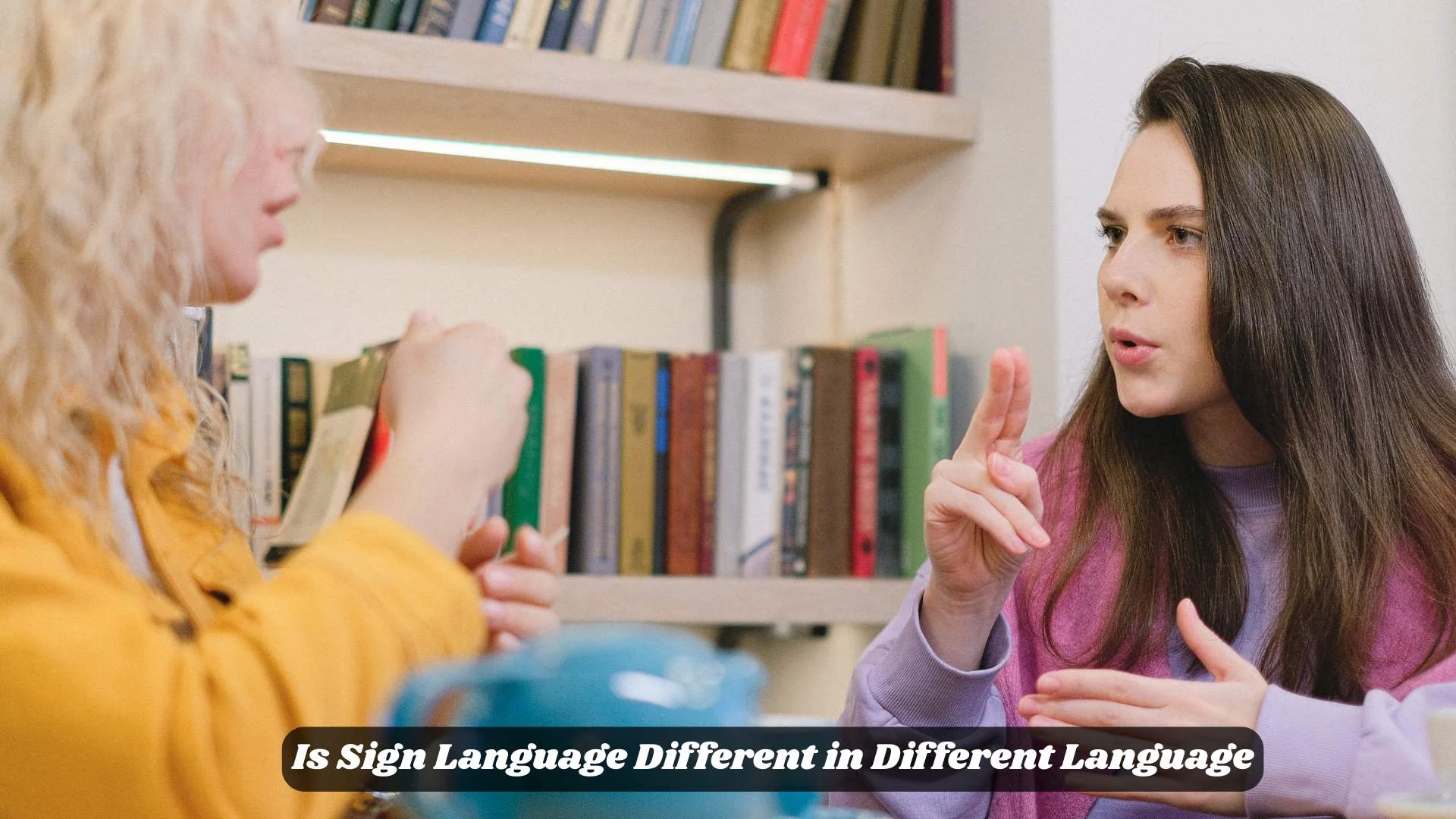Have you ever wondered if sign language is the same around the world?
It’s a common question — especially for those just starting to explore deaf culture or thinking about learning sign language.
The short answer is yes, sign language differs from country to country, just like spoken languages. In fact, there are over 300 different sign languages used around the world today!
In this blog, we’ll explore why sign languages vary, how they evolve, and what this means for learners, interpreters, and the Deaf community globally.
We’ll also answer common questions and provide real-life examples.
🧠 Why Is Sign Language Different in Different Countries?
Just like spoken languages, sign languages develop naturally over time within communities. They are shaped by culture, history, and even geography. For example:
- British Sign Language (BSL) is completely different from American Sign Language (ASL) — even though both countries speak English.
- Japanese Sign Language (JSL) and Chinese Sign Language (CSL) have their own unique grammar and vocabulary.
- Even within one country, regional dialects of sign language can exist, just like spoken accents.
Sign languages are not universal — and that’s because language is tied deeply to local culture and social interaction.
🌍 Examples of Different Sign Languages Around the World
Here are some widely used sign languages across the globe:
| Country | Sign Language Name | Notes |
| 🇺🇸 USA | American Sign Language (ASL) | Also used in parts of Canada and West Africa |
| 🇬🇧 UK | British Sign Language (BSL) | Different from ASL; uses two hands more often |
| 🇫🇷 France | Langue des Signes Française (LSF) | ASL is historically based on LSF |
| 🇯🇵 Japan | Japanese Sign Language (JSL) | Includes unique gestures and facial grammar |
| 🇨🇳 China | Chinese Sign Language (CSL) | Based on Chinese characters and local customs |
| 🇧🇷 Brazil | Libras (Língua Brasileira de Sinais) | Official language of the Deaf community in Brazil |
| 🇸🇪 Sweden | Svenskt teckenspråk | Rich in facial expressions and classifiers |
| 🇸🇦 Saudi Arabia | Saudi Sign Language | Officially recognized and growing in use |
| 🇿🇦 South Africa | South African Sign Language (SASL) | Recognized as one of the 12 official languages |
❓ Are Sign Languages Related to Spoken Languages?
No — sign languages are not just signed versions of spoken languages.
They have their own:
- Grammar
- Word order
- Vocabulary
- Idioms
- Expressions
For example, ASL grammar is closer to French than to English, because it developed from French Sign Language.
So if you’re learning ASL, knowing English grammar won’t automatically help — you’ll be learning a new visual language, not just hand gestures.
👀 Can Signers From Different Countries Understand Each Other?
Not usually. Just like someone who speaks only Japanese may not understand someone speaking Italian, a user of JSL likely won’t understand BSL.
However, many Deaf people who travel or attend international events use International Sign (IS) — a kind of simplified, unofficial system of signs used to bridge communication across languages.
But IS is not a fully developed language — it’s more like a “visual pidgin” used for basic understanding.
✍️ Fun Fact | There’s Even Fingerspelling!
Most sign languages include a fingerspelling alphabet, used to spell names or borrowed words. But even that differs between countries!
For example:
- ASL uses one-handed fingerspelling.
- BSL uses a two-handed alphabet.
🎓 So, Should You Learn a Local Sign Language?
Absolutely! If you’re planning to communicate with the Deaf community in your area, it’s best to learn the sign language specific to your region.
For example:
- In the US or Canada → Learn ASL
- In the UK → Learn BSL
- In India → Learn Indian Sign Language (ISL)
- In Australia → Learn Auslan
Learning sign language is more than memorizing signs — it’s about connecting with a culture and understanding a visual way of thinking.
🌟 Conclusion
Sign languages are as diverse, rich, and beautiful as spoken ones — and they reflect the identity, creativity, and culture of Deaf communities around the world. So yes, sign languages are different in different countries, and that’s exactly what makes them so fascinating.

James Parker is a passionate and insightful American author known for his unique ability to connect complex ideas with everyday experiences. With a background in creative writing and over a decade of experience in the literary world, James has dedicated his career to inspiring readers through thoughtful storytelling and practical wisdom.
His writing style is modern, engaging, and deeply reflective, often focusing on personal growth, human relationships, and the subtle beauty of life’s challenges. James Parker’s work is highly respected for its authenticity and relevance, making him a favorite among readers seeking both knowledge and emotional connection.
Over the years, James has authored several impactful books, including “The Path Within”, “Finding Clarity”, and “Bridges of Thought”, which continue to resonate with audiences around the world.

